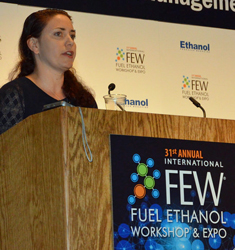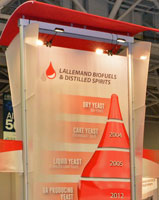 SNC-Lavalin has announced that Transmission & Distribution (T&D) has been awarded a new project by BC Hydro and Power Authority to produce the design and provide project and construction management services for the new BC Hydro Meikle Wind Terminal—a 230-kilovolt (kV) switchyard located approximately 23 kilometres northwest of Tumbler Ridge in British Columbia, Canada. The new switchyard will serve as the point of interconnection to the BC Hydro power grid for the Meikle Wind Energy Project, a wind farm being developed in the Peace River region. The wind farm will provide approximately 180 MW of energy.
SNC-Lavalin has announced that Transmission & Distribution (T&D) has been awarded a new project by BC Hydro and Power Authority to produce the design and provide project and construction management services for the new BC Hydro Meikle Wind Terminal—a 230-kilovolt (kV) switchyard located approximately 23 kilometres northwest of Tumbler Ridge in British Columbia, Canada. The new switchyard will serve as the point of interconnection to the BC Hydro power grid for the Meikle Wind Energy Project, a wind farm being developed in the Peace River region. The wind farm will provide approximately 180 MW of energy.- Dairyland Power Cooperative has issued a request for proposals (RFP) for up to 25 MW of renewable energy from one or more new utility-scale photovoltaic solar facilities. The RFP seeks proposals from qualified bidders for up to 25 MW of capacity with commercial operation to begin by July 1, 2016. Dairyland is receptive to a variety of proposal options, including Dairyland ownership of new facilities, power purchase agreements (PPAs) or other arrangements, single or multiple sites.
- Bay Area Trash Compactor has announced the installation of the first-of-its-kind combination solar powered trash compactor and portable cardboard baler at the LEED Platinum Certified Bardessono Hotel and Spa in the Napa Valley, California. Completely off the grid, the solar powered compactor packs 16 yards of loose trash into just 4 yards, reducing waste pick-up at the busy property to just once per week.
- Intersolar North America, taking place July 14-16, 2015 in San Francisco, California, will feature intensive and in-depth panel discussions on the new financing models driving the market. This program features a special nine-session financing package, eight of them developed with the SunSpec Alliance, a trade alliance of more than 70 solar and storage distributed energy industry participants, as well as an additional panel focused on discussing the latest developments in U.S. solar policy that will impact financing.
Gevo’s Biojet Fuel Catches Air
Gevo’s technology to convert wood waste to biojet fuel has achieved a breakthrough in its fermentation technology and will soon “catch air” as its soars in the sky in test flights. The wood waste is first converted to isobuanol and then converted into alcohol-to-jet fuel.
Gevo has an operational plant in Luverne, Minnesota that has flexible feedstock technology allowing the plant to produce isobutanol from multiple feedstocks. In the past the primary feedstock has been corn and the resulting fuel has been tested by airlines and the U.S. military in their planes. This new process uses forest residues. Removing waste helps to prevent forest fires.
According to the company, they have adapted their patented Gevo Integrated Fermentation Technology(R) (GIFT(R)) to convert the cellulosic sugars from wood into renewable isobutanol. They then use their patented hydrocarbon technology to convert the cellulosic isobutanol into alcohol-to-jet-synthetic paraffinic kerosene (ATJ-SPK) fuel.
“There are significant economic and environmental benefits of renewable jet fuel, which makes it a great market for Gevo. This announcement demonstrates the flexibility of our technology and reinforces our technology leadership,” said Dr. Pat Gruber, Chief Executive Officer of Gevo, Inc. “The next two milestones for renewable jet fuel are the approval by ASTM and the scheduled commercial test flights. Our team is actively engaged in both of these activities.”
Gevo’s cellulosic isobutanol production will be conducted at a demonstration facility in St. Joseph, MO, that the company jointly operates with ICM Inc. The ATJ-SPK will be produced in Silsbee, Texas, at the demonstration facility the company operates with South Hampton Resources.
The company is a member of the Northwest Advanced Renewables Alliance (NARA) and is providing the organization with technology to enable the commercial scale processing of cellulosic sugars from wood waste into valuable products. The cellulosic jet fuel made using Gevo’s technologies will be used in a 1,000-gallon renewable fuel demonstration test flight that NARA announced yesterday in conjunction with Alaska Airlines. Gevo’s isobutanol and ATJ-SPK technologies are both planned to be licensed by NARA as part of this project.
Ralph Cavalieri, director of NARA, added, “We’re encouraged by Gevo’s work with the NARA team in converting Pacific Northwest forest residual biomass into jet fuel, and look forward to working with them on this test flight and in the next phases of the commercialization of this technology.”
Ethanol Industry Thoughts on Presidential Candidates
 Several new presidential hopefuls in both parties have officially declared their candidacies recently and more are planning to announce soon. During a press briefing at the 2015 Fuel Ethanol Workshop, Bob Dinneen with the Renewable Fuels Association and Brooke Coleman with the Advanced Ethanol Council were asked how they think the candidates, declared and undeclared, rate when it comes to the Renewable Fuel Standard.
Several new presidential hopefuls in both parties have officially declared their candidacies recently and more are planning to announce soon. During a press briefing at the 2015 Fuel Ethanol Workshop, Bob Dinneen with the Renewable Fuels Association and Brooke Coleman with the Advanced Ethanol Council were asked how they think the candidates, declared and undeclared, rate when it comes to the Renewable Fuel Standard.
Dinneen attended the Iowa Ag Summit in March where nine Republican presidential hopefuls were asked their views on the RFS and was not surprised that the only two who said they were opposed were from Texas – the first declared GOP candidate Sen. Ted Cruz and former Gov. Rick Perry, who just formally declared this week. “That’s a dog bites man story if there ever was one,” said Dinneen. “I would think less of those two men if they weren’t sticking up for their big Texas oil industry.”
Dinneen was surprised by the candidates who did express support for the RFS, some of them publicly for the first time, including former Florida Governor Jeb Bush, who is expected to announce his candidacy later this month, New Jersey Gov. Chris Christie and Wisconsin Gov. Scott Walker, both of whom have yet to declare.
On the Democratic side, another new candidate announced this week was former Rhode Island governor Lincoln Chafee, but the big dog in the fight is still Hillary Clinton and Coleman was impressed with her recent op-ed in the Cedar Rapids Gazette. “It suggested that she understands the different intricacies of the challenges we face in this industry,” said Coleman. “However, one op-ed does not make a candidate and we will have to continue to work with Secretary Clinton to make sure that she is helpful to make sure she is helpful with regard to what we are dealing with in the administration right now because there is no better person to help us than Hillary Clinton when it comes to where the Obama administration is in the Renewable Fuel Standard.”
Listen to Dinneen and Coleman here: Comments from RFA's Bob Dinneen and AEC's Brooke Coleman at FEW
Novozymes Ethanol Game Educates at #FEW15
 “Gamification” is the concept of applying game-design thinking to non-game applications as engaging learning tools, particularly for the younger generation and Novozymes had a great example on display at the 2015 Fuel Ethanol Workshop.
“Gamification” is the concept of applying game-design thinking to non-game applications as engaging learning tools, particularly for the younger generation and Novozymes had a great example on display at the 2015 Fuel Ethanol Workshop.
The Ethanol Challenge game features characters like Alphie the alpha amylase, Glucador the glucoamylase, and a number of enzyme buddies who help them out throughout the ethanol production process as they navigate through dangerous doughballs and bacteria. Rachel Burton with Novozymes says the Ethanol Challenge is their foray into gamification as part of a training program they have developed called Bioenergy University. “We’re launching that this summer for our customers,” said Burton. “We have three tiered learning tracks – a basic beginner track, an advanced track, and we have an expert level track.”
Rachel explains more in her FEW presentation on “Next Generation Training for Ethanol Plants.” Rachel Burton, Novozymes, at 2015 FEW
Watch Rachel demonstrate the Ethanol Challenge game in this video:
Lallemand Makes #FEW15 Fashion Statement
 Lallemand Biofuels and Distilled Spirits really stood out at the opening of the 2015 Fuel Ethanol Workshop trade show with logo patterned pants that were definitely attention-getting.
Lallemand Biofuels and Distilled Spirits really stood out at the opening of the 2015 Fuel Ethanol Workshop trade show with logo patterned pants that were definitely attention-getting.
“We just decided we wanted to try something a little bit different and stand out a little bit,” said Lallemand VP of Marketing Craig Pilgrim, who came up with the idea. “I looked on line and saw some crazy, swirly pants and said we could probably incorporate our logo in there and figured most people wouldn’t be wearing that the night of the trade show.”
 The crazy pants helped draw attention to the fact that Lallemand is celebrating its 35th Alcohol School this year in Montréal September 13-18. “Started off very small, 10 or 12 people in a room,” said Pilgrim. “We have roughly over 4,000 people that we’ve educated over the 35 years.”
The crazy pants helped draw attention to the fact that Lallemand is celebrating its 35th Alcohol School this year in Montréal September 13-18. “Started off very small, 10 or 12 people in a room,” said Pilgrim. “We have roughly over 4,000 people that we’ve educated over the 35 years.”
The course provides detailed information on both fuel ethanol and beverage alcohol unit processes and is designed for lab, plant, and management personnel with lectures, laboratory demonstrations, seminars, and lab visits. Find out more in this interview: Interview with Craig Pilgrim, Lallemand
Alaska Airlines Commits to Renewable Fuel
Alaska Airlines has teamed up with Washington State University’s Northwest Advanced Renewable Alliance (NARA) to advance development on renewable jet fuel made from forest residues. As a result of the collaboration, Alaska Airlines plans on taking the aviation biofuels to the sky during a demonstration flight next year.
NARA is focusing on developing alternative jet fuel derived from post-harvest forest residuals, which are often burned after the timber harvest. By using these waste materials as the feedstock of a biojet fuel supply chain, NARA and its aviation industry partners, are looking to reduce fossil fuel use and greenhouse gas emissions as well as bolster sustainable economic-development potential in timber-based rural communities located throughout the Pacific Northwest.
“Alaska Airlines is thrilled to partner with NARA to help further promote sustainable aviation biofuels,” said Joe Sprague, Alaska Airlines senior vice president of external relations. “Sustainable biofuels are a key to aviation’s future and critical in helping the industry and Alaska Airlines reduce its carbon footprint and dependency on fossil fuels.”
NARA is a five-year project supported by the U.S. Department of Agriculture, National Institute of Food and Agriculture, and is comprised of 22 member organizations from industry, academia and government laboratories.
“Developing alternative jet fuel made from forest residuals represents a significant economic challenge with considerable sustainability benefits,” added Michael Wolcott, NARA co-director. “While the price of oil fluctuates, the carbon footprint of fossil fuels remains constant. NARA efforts to engage stakeholders from forest managers to potential fuel users like Alaska Airlines to lay the foundations for a bio-based, renewable fuel economy is exciting work that we believe will benefit society in the years ahead.”
BioEnergy Bytes
 Vivint Solar has announced that they have entered into their first solar commercial and industrial investment fund to which the investor has committed to invest $150 million, which will allow the company to finance energy efficient commercial and industrial solar projects. This announcement marks the first time that Vivint Solar has expanded its offerings beyond residential solar.
Vivint Solar has announced that they have entered into their first solar commercial and industrial investment fund to which the investor has committed to invest $150 million, which will allow the company to finance energy efficient commercial and industrial solar projects. This announcement marks the first time that Vivint Solar has expanded its offerings beyond residential solar.- According to the new report, “Small Wind Power Market,” the global small wind power market was valued at $776.8 million in 2014 and is estimated to reach $1,895.0 million by 2019, at a CAGR of 19.5% during the period under consideration. Small wind turbines produce clean energy, emission-free power farms for homes and small businesses. Small wind turbines with capacities less than 100 kW have major applications for off-grid setups such as telecommunication towers and domestic uses finds the report.
- The OXIS Solar Centre for Autonomous Research (OSCAR) has launched Project Helios as a launch-pad for cheaper commercial solar energy right across the world. OSCAR is a specially built demonstration centre that houses OXIS’ entire solar storage technology. The Project Helios demonstration comprises a 3.8 kWp solar PV power generation system which is fully integrated with a 3 kWh OXIS Lithium Sulfur battery. It has 16 PV panels which are connected in series to produce 600V DC and this feeds into the widely used SMA Sunny Boy Inverter to generate a 240V, 50Hz “mains” output. The inverter includes Maximum Power Point Tracking (MPPT) to ensure that the panels operate at maximum efficiency under all conditions of sunlight and temperature.
- NEXTracker, Inc., designer and manufacturer of single axis photovoltaic trackers, announced the completion of tracker commissioning for the SunEdison 82 megawatt Pacifico and Choluteca solar power plants in Honduras.
Nat’l Debt Grows, Energy Costs Rise
Americans have had some recent relief at the pump but it may be short-lived. According to State of the World 2015, long-term energy costs are on the rise. Why? America’s, along with other countries’ growing debt. Author John  Hagens a former hedge fund manager who now teaches human macro-ecology at University of Minnesota, said nations are papering over these costs with debt. He continues that higher energy costs are leading to continued recessions, excess claims on future national resources, and more-severe social inequality and poverty.
Hagens a former hedge fund manager who now teaches human macro-ecology at University of Minnesota, said nations are papering over these costs with debt. He continues that higher energy costs are leading to continued recessions, excess claims on future national resources, and more-severe social inequality and poverty.
State of the World finds that the relatively low cost of energy extraction of oil, coal and natural gas, compared to the benefits seen from fossil fuels may be the most important factor in the industrialized world’s economic success. Historically, the report continues, large quantities of inexpensive fuels were available even after accounting for the energy lost to extract and process them. But, as remaining fuels become less accessible, higher energy costs will have ripple effects through economies built around continued large energy-input requirements. Rising costs, the report states, will endanger highly energy-intensive industries and practices—including the energy sector itself—as well as widen and deepen poverty as everything becomes more expensive.
“Despite having ‘plenty of energy,’ higher physical costs [of extraction] suggest that energy likely will rise from a historical average of 5 percent of GDP [gross domestic product], to 10–15 percent of GDP or higher,” writes Hagens.
 In the short term, Hagen notes nations are taking on growing debt to avoid losses in GDP—an indicator of the economic health of a country. Since 2008, the Group of Seven nations (Canada, France, Germany, Italy, Japan, the United Kingdom, and the United States) have added about $1 trillion per year in nominal GDP, but only by increasing their debt by over $18 trillion.
In the short term, Hagen notes nations are taking on growing debt to avoid losses in GDP—an indicator of the economic health of a country. Since 2008, the Group of Seven nations (Canada, France, Germany, Italy, Japan, the United Kingdom, and the United States) have added about $1 trillion per year in nominal GDP, but only by increasing their debt by over $18 trillion.
However, Hagens argues, continued use of credit to mask the declining productivity of energy extraction is unsustainable. For each additional debt dollar, less and less GDP is generated, and, at the same time, our highest-energy-gain fuels are being depleted. Energy is becoming more expensive for the creditor in the future than for the debtor in the present.
“We have entered a period of unknown duration where things are going to be tough,” writes Hagens. “But humanity in the past has responded in creative, unexpected ways with new inventions and aspirations.” While policy choices such as banking reform, a carbon and consumption tax, and moving away from GDP as a proxy for well-being are good long-term ideas, “we urgently need institutions and populations to begin to prepare…for a world with the same or less each year instead of more.”
Novozymes on #FEW15 Advanced Biofuels Track
 Novozymes was first up on the Cellulosic and Advanced Ethanol Track at the 2015 Fuel Ethanol Workshop with ways to help first generation biofuels producers take the next leap forward with enzyme technology.
Novozymes was first up on the Cellulosic and Advanced Ethanol Track at the 2015 Fuel Ethanol Workshop with ways to help first generation biofuels producers take the next leap forward with enzyme technology.
“We’ve been looking at how we can take all of our significant efforts in research and development in cellulases and find applications for them,” said Novozymes scientist Aaron Hawkins.
One of those is Spirizyme® Achieve, the industry’s first fiber-degrading glucoamylase, which can increase ethanol yields by an average of two percent by getting more starch out of the corn fiber and ultimately be used to produce cellulosic ethanol.
“Corn fiber represents very low hanging fruit for the production of cellulosic ethanol,” said Hawkins. “If there were 100% adoption of a cellulosic ethanol process based on corn fiber, that could give us over a billion gallons of cellulosic ethanol capacity in the U.S. alone so there’s a very significant opportunity here for corn ethanol producers.” FEW 2015 presentation by Aaron Hawkins, Novozymes
Hawkins also talked about a brand new product they just launched for biodiesel producers called Eversa®, an enzymatic solution to make biodiesel from waste oils. “One of the major advantages of it is that it can utilize any feedstock with any free fatty acid composition,” including distillers corn oil, which Hawkins says “opens up new opportunities for corn ethanol producers to utilize distillers corn oil and upgrade it on site to biodiesel.”
These kinds of innovations, Hawkins says, are helping the industry move closer to a complete biorefinery concept. Interview with Aaron Hawkins, Novozymes
ACE Promotes Power by People at #FEW15
 The American Coalition for Ethanol (ACE) team was out in force at the 2015 Fuel Ethanol Workshop backed by the Power by People faces of the industry.
The American Coalition for Ethanol (ACE) team was out in force at the 2015 Fuel Ethanol Workshop backed by the Power by People faces of the industry.
Something new for ACE this year is a retailer-focused website promoting the whys and hows of moving into flex fuels called FlexFuelForward.com and they were encouraging FEW attendees to check it out and use it as a tool to educate retailers.
Like everyone else in the industry, ACE was disappointed by the EPA’s proposed rule for volume obligations under the RFS but they were also encouraging FEW attendees to make their voices heard during the comment period. ACE Executive Vice President Brian Jennings says they plan to show the power of the people in this industry during the public hearing June 25 in Kansas City. “We’re going to get a bunch of retailers who are selling E15 and E85 to go to that hearing and tell EPA face-to-face that the blend wall isn’t real,” said Jennings. “We’re going to make sure we get some very persuasive messengers to come deliver a very compelling message to that hearing.”
In this interview, Jennings also talks about E15’s forced summer vacation which just started June 1 in many areas, as well as last week’s report from NREL on the ability of fuel infrastructure to handle E15. Interview with ACE Executive VP Brian Jennings at FEW




